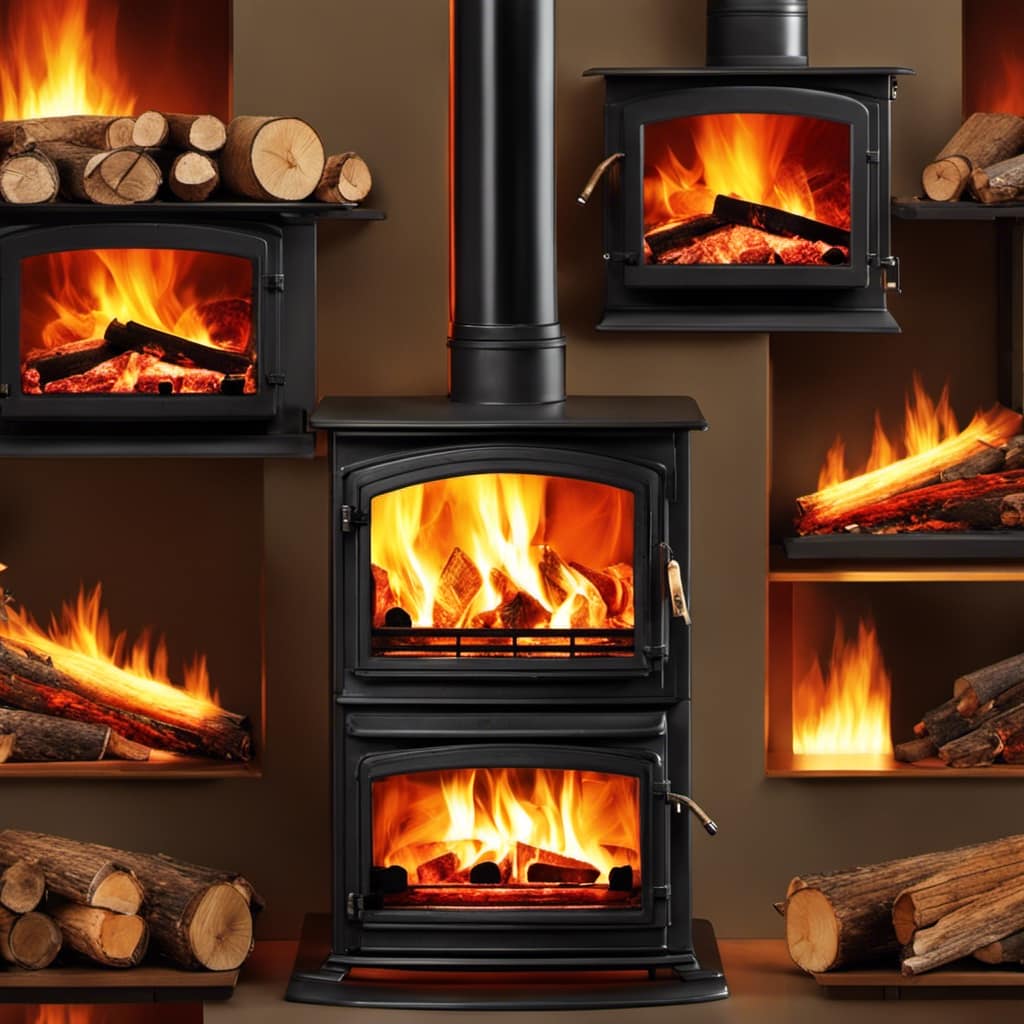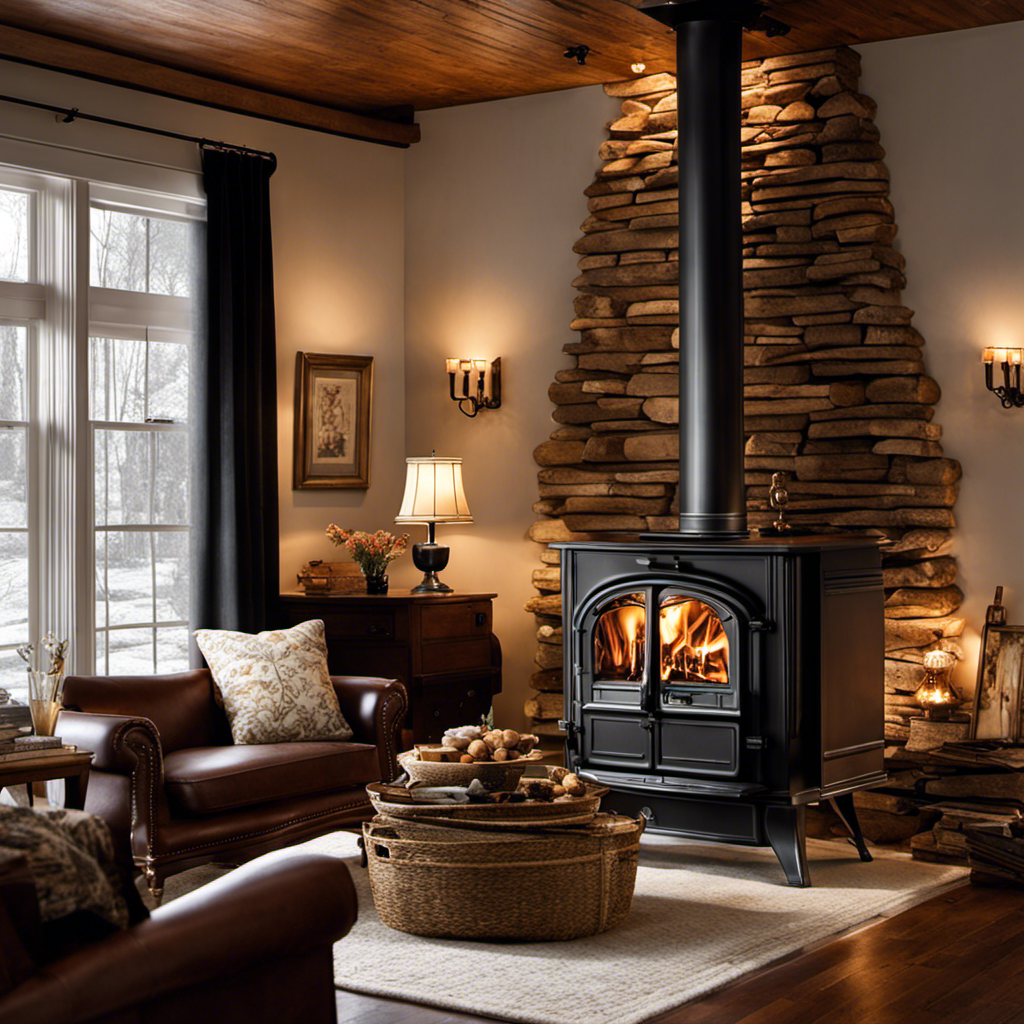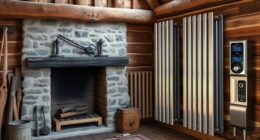
Hello, everyone! Have you ever thought about how your wood stove works?
Well, buckle up, because I’m here to give you the inside scoop on secondary combustion.
It’s a nifty little process that helps your wood stove burn more efficiently and reduce those pesky emissions.
From the science behind it to practical tips for optimizing it, this article has got you covered.

So sit back, grab a cup of cocoa, and let’s dive into the fascinating world of wood stove secondary combustion!
Key Takeaways
- Secondary combustion increases heat output and reduces emissions.
- Proper airflow and mixing are essential for efficient secondary combustion.
- Higher temperatures lead to more complete burning and lower emissions.
- Achieving the right balance of airflow is crucial for maximizing efficiency and reducing environmental impact.
The Basics of Secondary Combustion
As I learn about the basics of secondary combustion, I realize how crucial it’s for maximizing the efficiency of my wood stove.
Secondary combustion refers to the process that occurs when the gases produced during the initial combustion of wood are burned again, resulting in increased heat output and reduced emissions.
This technique offers numerous benefits, such as improved energy efficiency and reduced environmental impact.
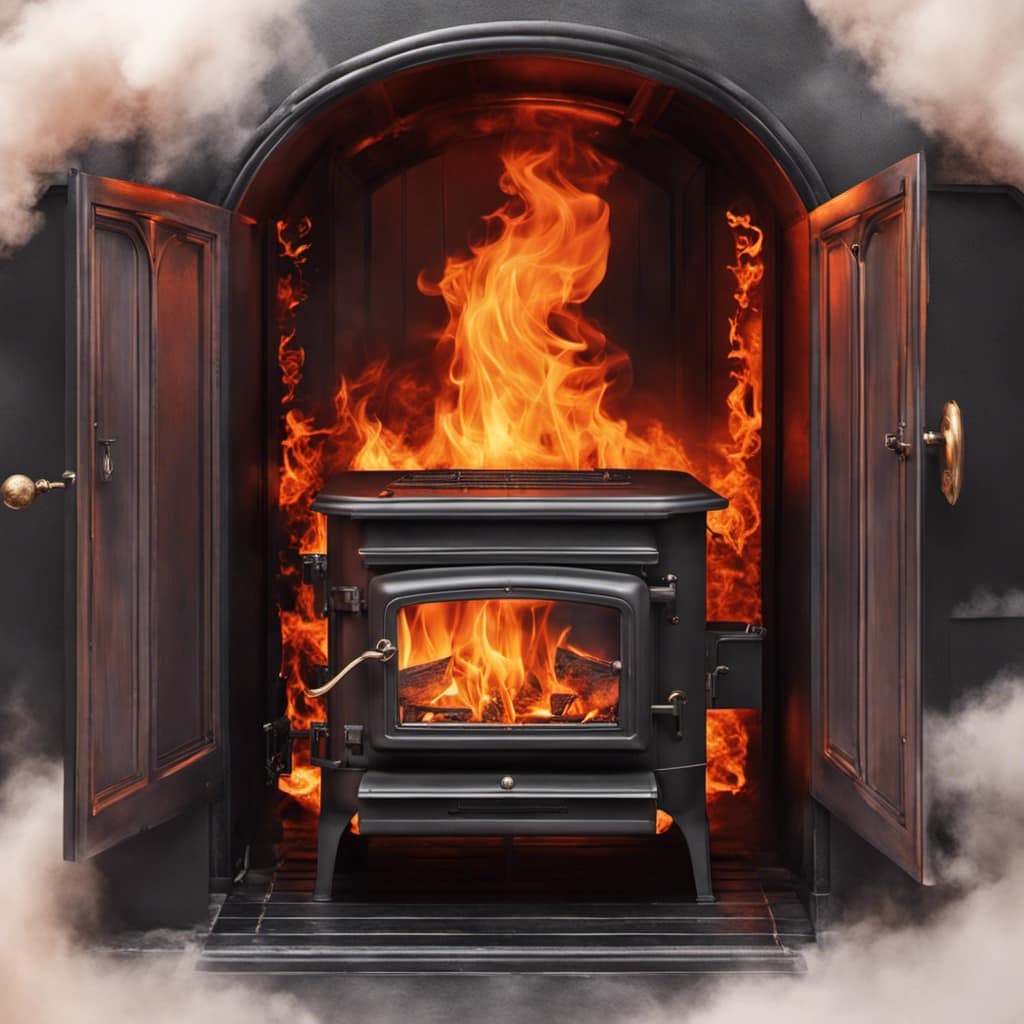
To achieve secondary combustion, there are several techniques that can be employed, including providing adequate air supply, ensuring proper insulation, and using a well-designed stove with a secondary combustion chamber.
Understanding and implementing these techniques can significantly enhance the performance of my wood stove, making it more efficient and environmentally friendly.
Now, let’s delve into the science behind secondary combustion and explore how it works.
Understanding the Science Behind Secondary Combustion
I have read about the benefits of secondary combustion, but now I want to understand the science behind it. Secondary combustion techniques in industrial furnaces play a crucial role in increasing efficiency and reducing emissions.
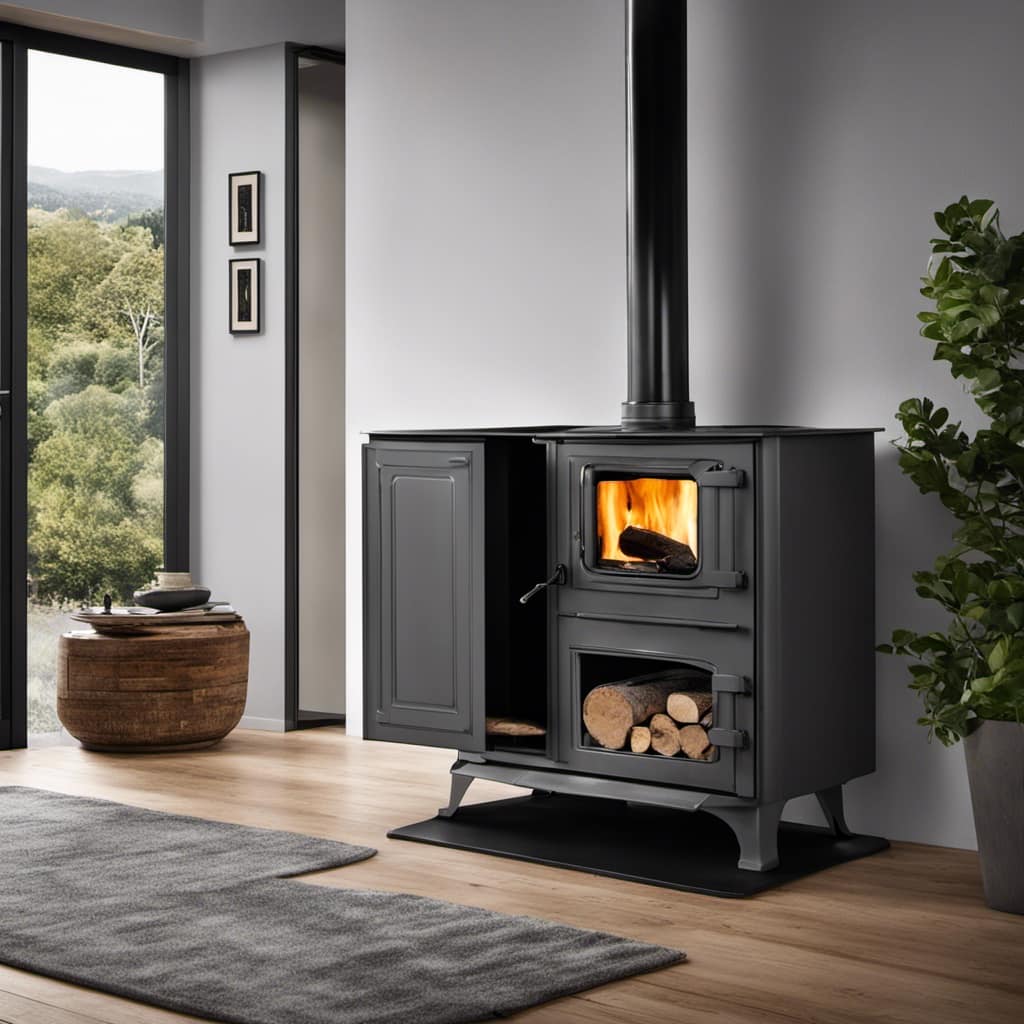
Here are four key aspects that explain the science behind this process:
-
Airflow: Proper air flow is essential for secondary combustion reactions. By introducing additional air into the combustion chamber, the oxygen-rich environment allows for more complete combustion of fuel.
-
Mixing: The mixing of fuel and air is a critical factor. Efficient mixing ensures that all fuel particles come into contact with oxygen, promoting complete combustion and minimizing the formation of pollutants.
-
Temperature: Secondary combustion relies on high temperatures to facilitate the breakdown of complex hydrocarbons. The increased heat allows for the release of more energy and the reduction of harmful emissions.

-
Residence Time: The longer the fuel remains in the combustion chamber, the better the chances of achieving secondary combustion. Adequate residence time ensures that all fuel particles have enough time to react fully, maximizing the efficiency of the process.
Understanding these fundamental aspects of secondary combustion can help us design more efficient and environmentally friendly industrial furnaces.
Factors Affecting Secondary Combustion Efficiency
From my research, it seems that airflow and mixing are the two main factors that affect secondary combustion efficiency in wood stoves.
Secondary combustion temperature refers to the temperature at which the gases produced during primary combustion are burned. Higher secondary combustion temperatures lead to more complete burning and lower emissions.
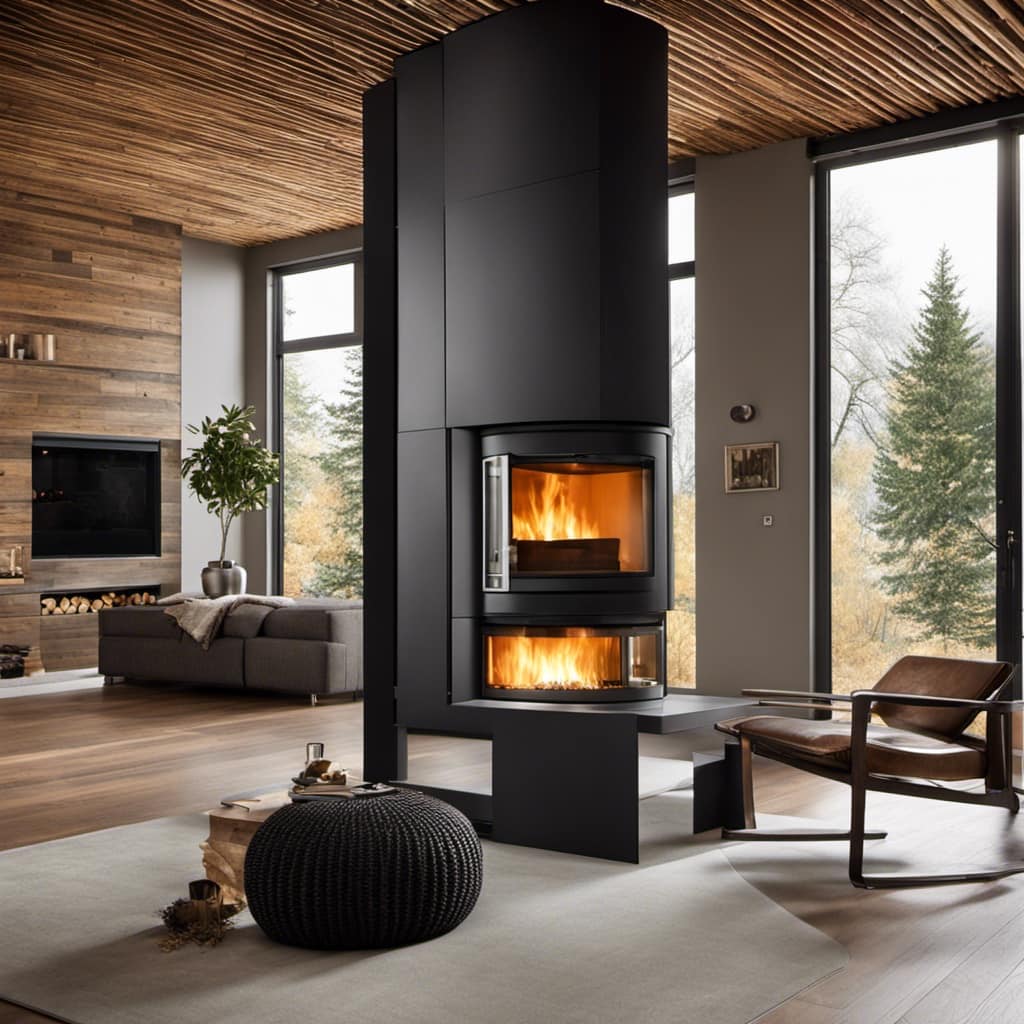
Airflow control plays a crucial role in achieving optimal secondary combustion. By adjusting the amount of air entering the stove, we can regulate the oxygen supply and create the ideal conditions for secondary combustion. Insufficient airflow can result in incomplete combustion and the release of harmful pollutants. On the other hand, too much airflow can cool down the stove, reducing the secondary combustion temperature.
Achieving the right balance is essential for maximizing efficiency and reducing environmental impact.
Tips and Tricks for Optimizing Secondary Combustion in Your Wood Stove
By properly adjusting the damper and ensuring a clean chimney, you can optimize the secondary combustion in your wood stove for maximum efficiency. Here are four tips and tricks to help you achieve this:
-
Improve airflow: Make sure there’s enough oxygen in the combustion chamber by opening the air vents. This will allow for a cleaner and more efficient burn.
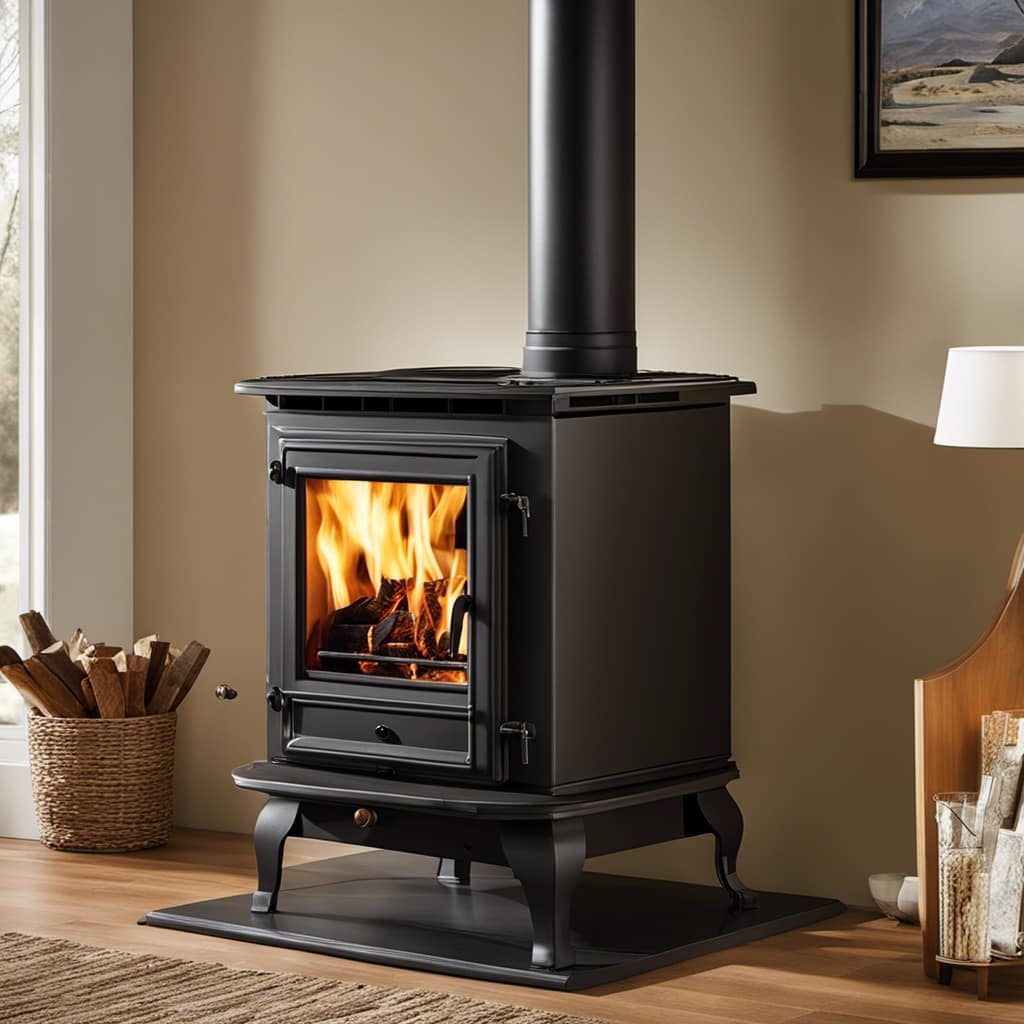
-
Proper wood selection: Use well-seasoned hardwoods like oak or maple, as they burn hotter and produce less smoke. Avoid using green or softwood, as they can create more creosote buildup and reduce airflow.
-
Use smaller, well-stacked wood: This allows for better airflow between the logs, promoting more complete combustion.
-
Maintain a hot fire: Keep the fire burning hot to ensure efficient secondary combustion. Avoid smoldering fires, as they produce more smoke and pollutants.
By following these tips, you can optimize secondary combustion in your wood stove and achieve greater efficiency.
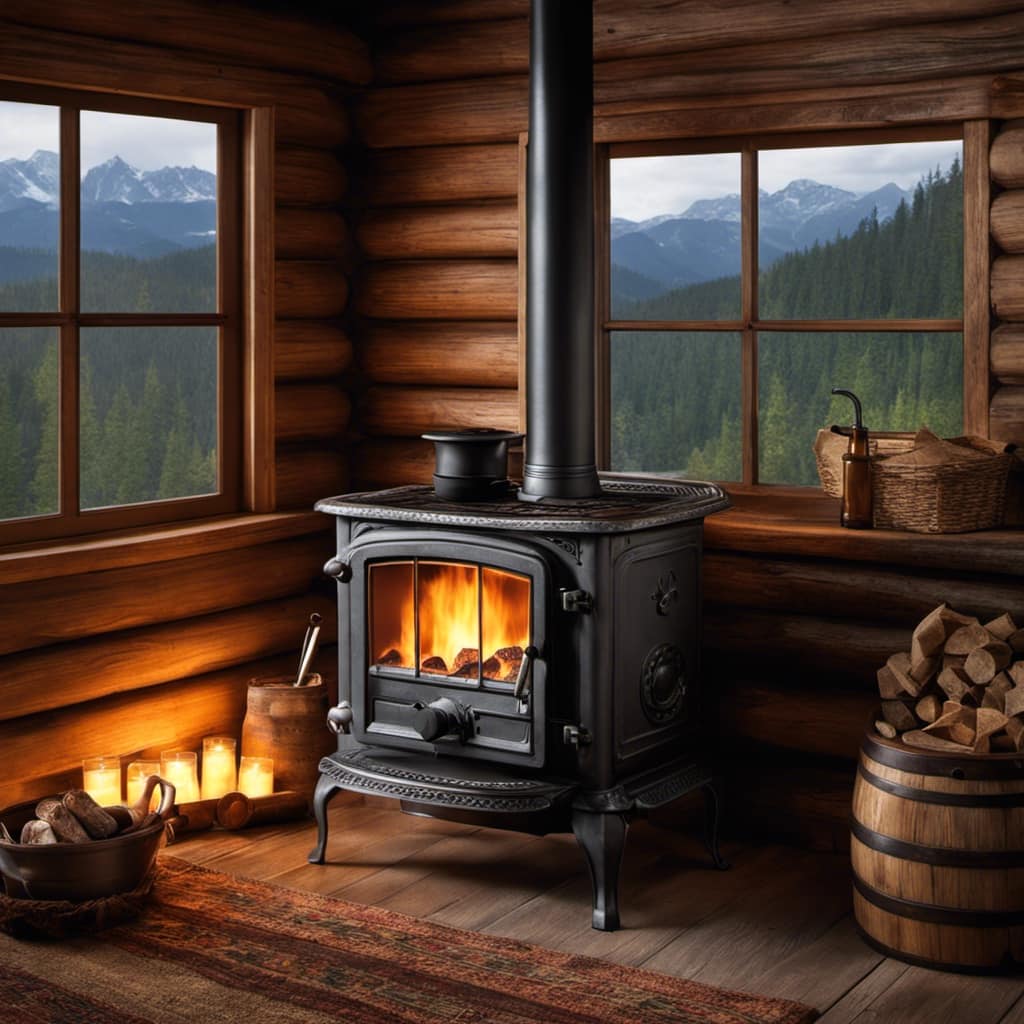
However, there are some common myths and misconceptions about secondary combustion that we need to address.
Common Myths and Misconceptions About Secondary Combustion
There are several common myths and misconceptions about secondary combustion that need to be addressed in order to promote a better understanding. Let’s debunk these misconceptions and shed some light on the benefits of secondary combustion.
| Myth | Fact |
|---|---|
| Secondary combustion is | Secondary combustion is not |
| harmful to the environment | harmful to the environment |
| and produces more pollution | and produces less pollution |
| than primary combustion. | than primary combustion. |
Contrary to popular belief, secondary combustion actually plays a crucial role in reducing emissions and increasing the efficiency of wood stoves. By introducing a second oxygen source into the combustion process, secondary combustion ensures that any unburned gases and particles are fully combusted, resulting in cleaner and more efficient combustion. This not only reduces air pollution but also maximizes the heat output of the wood stove, making it more cost-effective and environmentally friendly.
Frequently Asked Questions
How Often Should I Clean My Wood Stove to Maintain Optimal Secondary Combustion Efficiency?
I clean my wood stove regularly to maintain optimal secondary combustion efficiency. Cleaning helps remove soot and creosote buildup, ensuring better airflow and heat transfer. It’s an essential part of wood stove maintenance for optimizing combustion efficiency.

Can I Use Any Type of Wood in My Wood Stove for Secondary Combustion?
Yes, you can use different types of wood for secondary combustion in a wood stove. However, it’s important to choose hardwoods like oak or maple for optimal efficiency. To maximize secondary combustion, make sure the wood is dry and properly seasoned.
Are There Any Safety Precautions I Should Take When Using Secondary Combustion in My Wood Stove?
When using secondary combustion in my wood stove, I always take safety precautions to ensure a safe environment. This includes regular maintenance, such as cleaning the stove and chimney, using proper fuel, and having a working carbon monoxide detector.
Can Secondary Combustion Be Used in All Types of Wood Stoves, or Only Specific Models?
Yes, secondary combustion can be used in all types of wood stoves, not just specific models. It is a beneficial feature that improves air quality by burning off excess smoke and gases.
What Are the Potential Benefits of Secondary Combustion in Terms of Energy Efficiency and Cost Savings?
In terms of energy efficiency and cost savings, secondary combustion in wood stoves can offer significant benefits. By burning the smoke and gases produced during the initial combustion, it maximizes heat output and reduces fuel consumption.
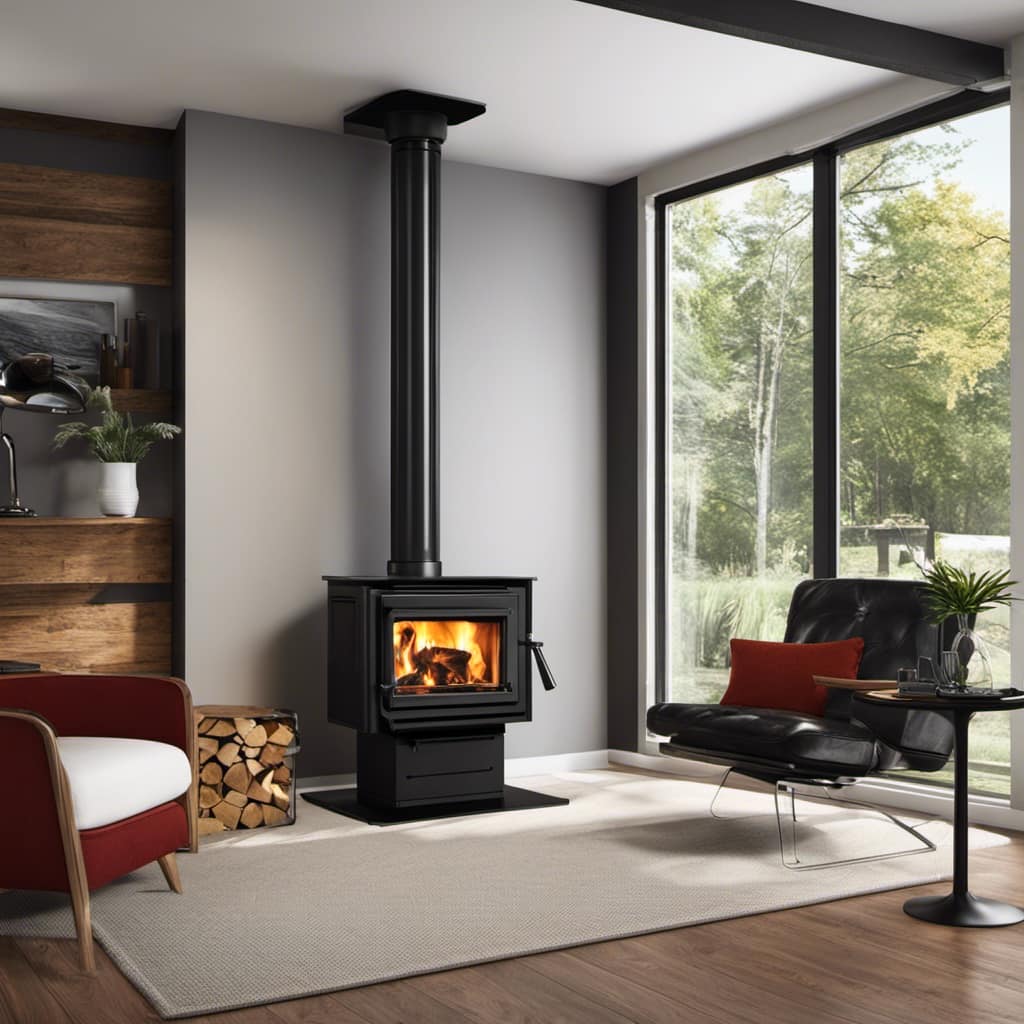
Conclusion
In conclusion, secondary combustion is a sensational solution to maximize the efficiency of your wood stove. By understanding the science behind it and implementing a few tricks, you can optimize the combustion process and reduce emissions.
Don’t be deceived by common myths; secondary combustion isn’t only efficient but also environmentally friendly.
So, stoke your stove, savor the savings, and let the flames of secondary combustion flicker fabulously in your home.
Growing up surrounded by the vast beauty of nature, Sierra was always drawn to the call of the wild. While others sought the comfort of the familiar, she ventured out, embracing the unpredictable and finding stories in the heartbeat of nature.
At the epicenter of every remarkable venture lies a dynamic team—a fusion of diverse talents, visions, and passions. The essence of Best Small Wood Stoves is crafted and refined by such a trio: Sierra, Logan, and Terra. Their collective expertise has transformed the platform into a leading authority on small wood stoves, radiating warmth and knowledge in equal measure.



